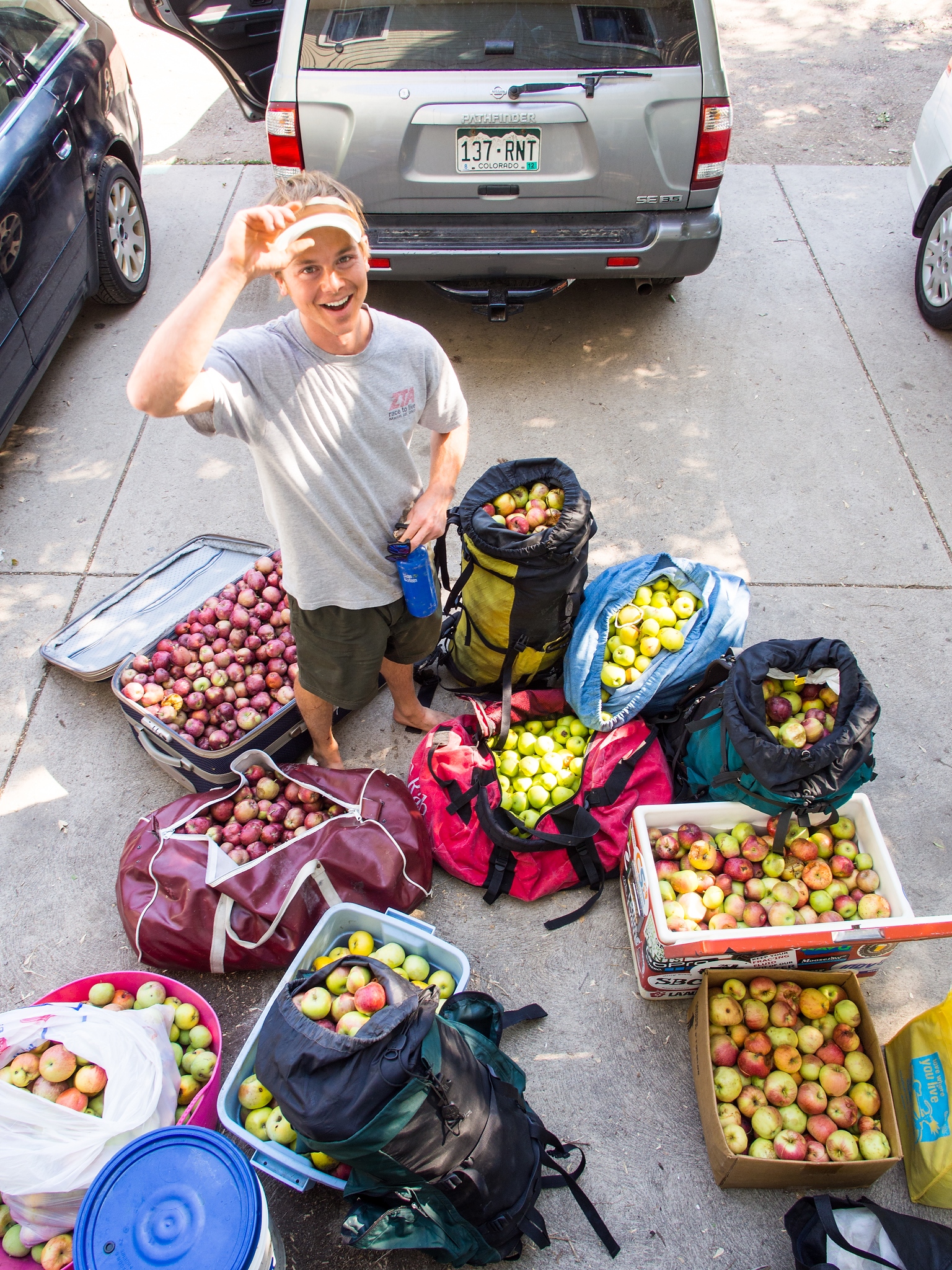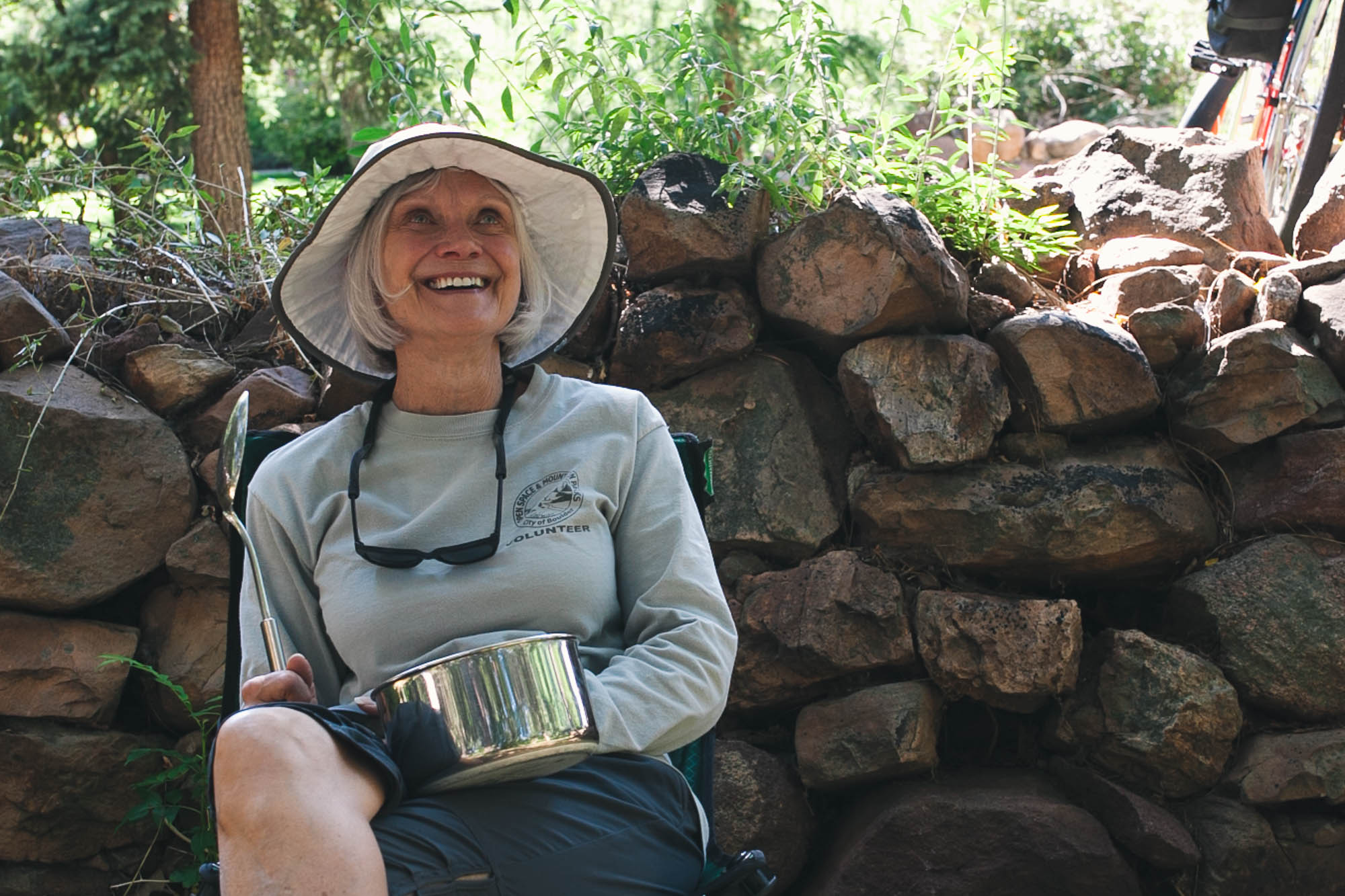Community support is essential.
Boulder takes great pride in its abundance of local wildlife and wild lands. The desire to keep Boulder wild allows the city and its community to implement a variety of unique solutions that help residents peacefully coexist with large carnivores such as black bears. Without the community’s support, Boulder would not be able to safeguard this species while also improving human safety and wellbeing. The examples below are just a handful of the standout programs implemented by the city, state, and community organizations and individuals to live alongside black bears.
It must be noted, however, that in order to continue on this path towards coexistence, the community must adopt proactive efforts that will reduce negative interactions. There will always be black bears who meander through Boulder’s urban areas, but if the community can reduce bear attractants by securing trash and compost, harvesting ripe fruit, removing bird feeders and other edible items while bears are active, and practicing safe hazing techniques when bears do come into town, the amount of conflicts can be drastically reduced. It’s up to us, Boulder!
The Bear Protection Ordinance was one of the major game changers in regard to reducing food attractants for bears and reducing negative conflicts.
In March 2014, the ordinance was implemented by the City of Boulder and requires all trash and curbside compost to be secured from bears at all times until collected by a waste hauler in the western part of the city, an area that sits at the base of the foothills. Ordinance requirements that pertain to all properties west of Broadway and south of Sumac include: all compost and trash carts, containers, dumpsters, or enclosures must be bear-resistant OR stored in a building, house, garage, shed or other enclosed structure until emptied by a trash hauler. Residents that violate the BPO requirements risk steep fines without any warnings. The ordinance was implemented in various phasing and violation levels; currently fines begin at $100 for the first offense, $250 for the second, and $500 for the third. Residents with broken bins have 72 hours to get their bins replaced by their waste hauler, or they risk being fined. Currently, city council is exploring expanding the ordinance to areas east of Broadway, as bear activity persists. This effort will be revisited in fall 2018.
Reducing the amount of wasted fruit which attracts wildlife into urban areas
To address the issue of wasted fruit and attracting wildlife to Boulder’s urban areas, members of Falling Fruit, Boulder Food Rescue, 350 Colorado, The Shed, and Boulder Bear Coalition came together to form the Community Fruit Rescue (CFR). This coalition quickly put together a system for registering fruit trees on an online map, scheduling harvests, and then had Boulder Food Rescue deliver the fruit to homeless shelters, food banks, etc. Now, residents that request assistance with harvesting their fruit trees can register the trees with CFR and schedule harvests, where volunteers will show up to assist. Since its inception in 2014, Community Fruit Rescue has harvested over 20,000 lbs of fruit. About 95% of the fruit harvested by CFR is apples, simply because that is what’s most available in Boulder. Once the fruit is harvested, it gets divided three different ways. The owner keeps ?, the volunteer pickers get to keep ? and divide it among themselves, and the last ? comes back to CFR’s bear-resistant storage space to be picked up by Boulder Food Rescue volunteers, who then deliver it to homeless shelters and food banks. Community Fruit Rescue is in high demand during peak harvest months, which provides an excellent volunteer opportunity for individuals looking to get involved.
Supporting wildlife officers, educating residents, and giving black bears a better chance of survival
The Bearsitter volunteer program was established in 2002 by Open Space and Mountain Parks (OSMP) interpreter Lynne Sullivan as a way to give urban black bears a better chance at survival while freeing up the time of OSMP rangers and Colorado Parks and Wildlife (CPW) officers. In addition to being literal bear babysitters, a major role of a bear sitter volunteer is to educate citizens about how to be safe with bears, and how to manage their homes and property to discourage bears from lingering in neighborhoods. When called for, volunteers may walk a neighborhood contacting the nearby residents to alert people to the presence of bear(s), and also serve as the eyes and ears for rangers and officers. Team members are trained by OSMP and CPW staff in bear natural history and behavior, and coached in crowd management and communication, to have the appropriate tools and judgement to be responsive to the safety needs of each situation. Bearsitters arrive to the scene only after an OSMP ranger or CPW officer have deemed the area safe, meaning the bear is not acting aggressively and is likely up in a tree sleeping. The goal is to keep the bear in the tree until the sun goes down. During the day, there are far too many active threats for both the bears and people, so bearsitters want to keep the bear in a safe, contained location. If the bear tries to come down too early, volunteers will haze (wave arms, yell, make loud noises) the bear back up the tree. Once the sun is down, volunteers, officers, and rangers will strategically position themselves and encourage the bear through hazing techniques to go in the desired direction. The hope is that the bear will return to the mountains and remember the unpleasant interaction with humans, never wanting to return to town.
*Pre-approved volunteers are trained for this role. Recruitment for this volunteer program is not open to the general public*
Camera trap videos from one of two native forage buffer sites
Increasing natural forage in the foothills to reduce human-bear conflict in urban areas
In the fall of 2016, Boulder Bear Coalition teamed up with City of Boulder Open Space & Mountain Parks, and the WILD Foundation to develop a new project that would encourage bears to stay out of Boulder’s urban areas, and in their natural mountain habitat. The three Boulder-based organizations joined on April 20, 2017 to plant two native forage buffer sites located in the foothills of City Open Space; one in a Habitat Conservation Area, and the other in a designated Natural Area. Working with the City of Boulder OSMP’s restoration plant ecologist, Megan Bowes, and her team, more than a dozen BBC and WILD volunteers planted over 200 native plants between the two sites. In addition to the shrub planting, wildlife camera traps were installed and will help monitor the success of both sites. The goal of this habitat enhancement project was to increase natural forage in the foothills, and therefore reducing human-bear conflict in urban areas. With much of the bear migration occurring in urban sections of northwestern Boulder, the project aims to accelerate production and recovery of fruit-bearing shrubs in natural black bear habitat. By augmenting natural harvests, bears may be less prone to migrate into urban environments in search of food, thus reducing their presence and interaction with humans within the city. 2017 camera documentation displayed wildlife activity ranging from mule deer, red fox, bobcats, coyotes, rabbits, and…black bears!





